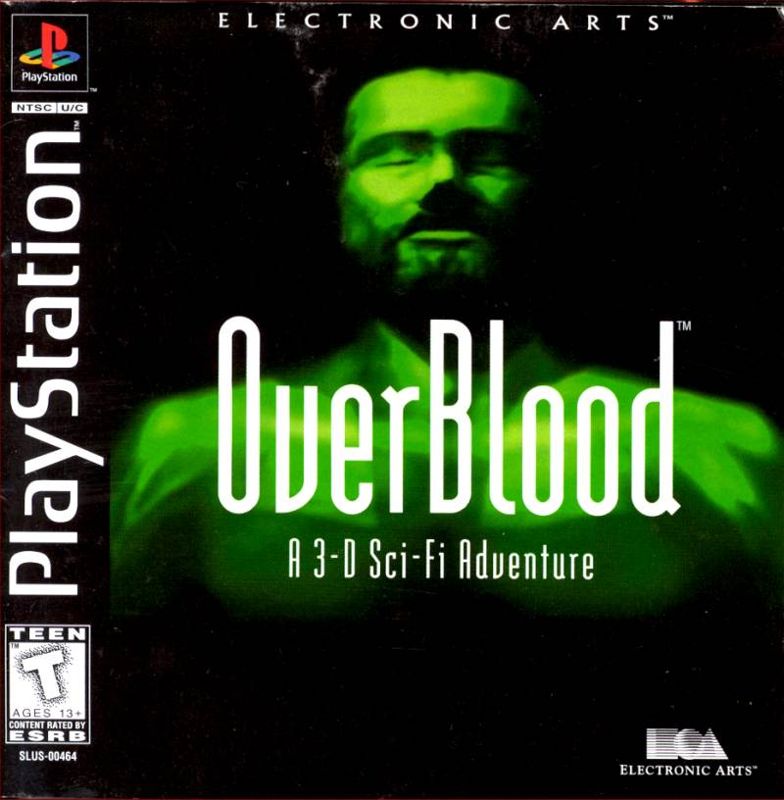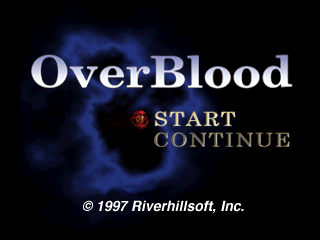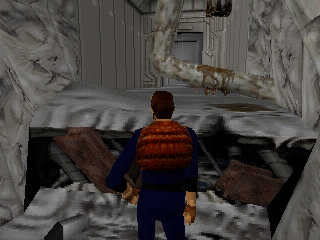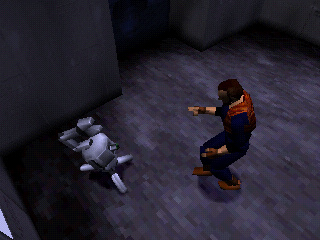Retro Replay Review
Gameplay
OverBlood places a strong emphasis on survival horror mechanics, blending exploration, environmental puzzles, and real-time combat into a cohesive experience. Players step into the shoes of Raz Karcy, a test subject who must navigate the maze-like corridors of Lystra Laboratories while managing scarce resources. Ammo is limited, and health-restoring items are hard to come by, so every encounter with mutated creatures or hostile security forces feels tense and meaningful.
(HEY YOU!! We hope you enjoy! We try not to run ads. So basically, this is a very expensive hobby running this site. Please consider joining us for updates, forums, and more. Network w/ us to make some cash or friends while retro gaming, and you can win some free retro games for posting. Okay, carry on 👍)
One of the game’s standout features is the ability to switch between third-person and first-person perspectives on the fly. This toggle system allows you to survey your surroundings with a wide view for platforming and puzzle sections, then zoom in for more precise aiming during combat. It adds a layer of strategic choice, as you decide which view best suits your current situation—exploration, item hunting, or high-stress firefights.
OverBlood also introduces occasional “interactive movie” sequences reminiscent of arcade titles like Die Hard Arcade. During these tense moments, you must press the correct button prompts in rapid succession to evade hazards or overpower enemies. Additionally, the game briefly puts you in control of Pipo, a small maintenance robot, to solve unique side puzzles undetectable to human characters. These diversions break up the main gameplay loop and showcase the developers’ willingness to experiment within the survival horror framework.
Graphics
At the time of its release, OverBlood’s fully 3D environments were a bold departure from the pre-rendered backdrops common to survival horror titles like Resident Evil. The dynamic camera follows Raz through each dimly lit corridor, and the polygonal models react in real time to lighting and shadows. While the textures can appear blocky by today’s standards, there’s a raw charm in the way walls crackle with fluorescent flicker or steam vents hiss in the darkness.
Character animations are serviceable, though occasionally stiff during dialogue scenes. Raz moves with a deliberate gait that reinforces the gravity of his mission, and creatures burst onto screen with surprising fluidity. The transition between first- and third-person views remains smooth, avoiding jarring camera cuts and preserving immersion. For collectors and retro enthusiasts, the game’s visual quirks provide a nostalgic window into late-’90s console capabilities.
In addition to environmental detail, OverBlood’s art direction shines in its variety of laboratory settings. You’ll explore bio-testing chambers, overgrown greenhouses, polluted waterways, and underground archives, each with its own color palette and hazard elements. These distinct areas help maintain tension and pique curiosity, ensuring you remain invested in mapping every room and discovering hidden routes.
Story
The narrative thrust of OverBlood revolves around Raz Karcy’s fight for survival and search for a cure to a mysterious infection. Waking from a cryogenic chamber due to a system malfunction, Raz learns he’s the key test subject in a series of controversial genetic experiments conducted by Lystra Laboratories. As he delves deeper, he uncovers layers of conspiracy, betrayal, and chilling moral ambiguity.
Dialogue and cutscenes are delivered through a mix of in-engine animations and full-motion video sequences. While some of the voice acting can be melodramatic, it contributes to the game’s suspenseful atmosphere and occasionally humorous camp. The story unfolds at a deliberate pace, with narrative beats carefully placed to reward attentive players who read files, diaries, and computer logs scattered throughout the facility.
Beyond the main plot, OverBlood teases subplots involving rogue scientists, corporate espionage, and Raz’s own forgotten past. Clues to his identity and the true scope of the Lystra project emerge gradually, encouraging multiple playthroughs to catch every twist. The integration of story into puzzles and level design ensures that lore feels intrinsic to each environment rather than shoehorned in as an afterthought.
Overall Experience
OverBlood offers a distinctive survival horror experience that stands apart from its contemporaries. Its blend of fully 3D exploration, variable camera perspectives, and occasional on-rails quick-time events creates a diverse gameplay landscape. While it may lack the polish of later genre-defining classics, it more than compensates with ambition and creative risk-taking.
Players who appreciate atmospheric tension and methodical puzzle solving will find plenty to savor, from unraveling the mysteries of Lystra Laboratories to managing limited supplies in claustrophobic corridors. The game’s moderate difficulty curve rewards careful observation and backtracking, making every unlocked door or decoded puzzle feel like a genuine achievement.
Ultimately, OverBlood is a hidden gem for fans of retro survival horror. Its story-driven approach, combined with unique mechanics such as the Pipo robot segments and perspective toggling, ensures a memorable journey. Those willing to embrace its dated graphics and occasional awkward controls will be rewarded with a rich, immersive adventure that anticipates many conventions of the genre that would come to define the 2000s.
 Retro Replay Retro Replay gaming reviews, news, emulation, geek stuff and more!
Retro Replay Retro Replay gaming reviews, news, emulation, geek stuff and more!









Reviews
There are no reviews yet.